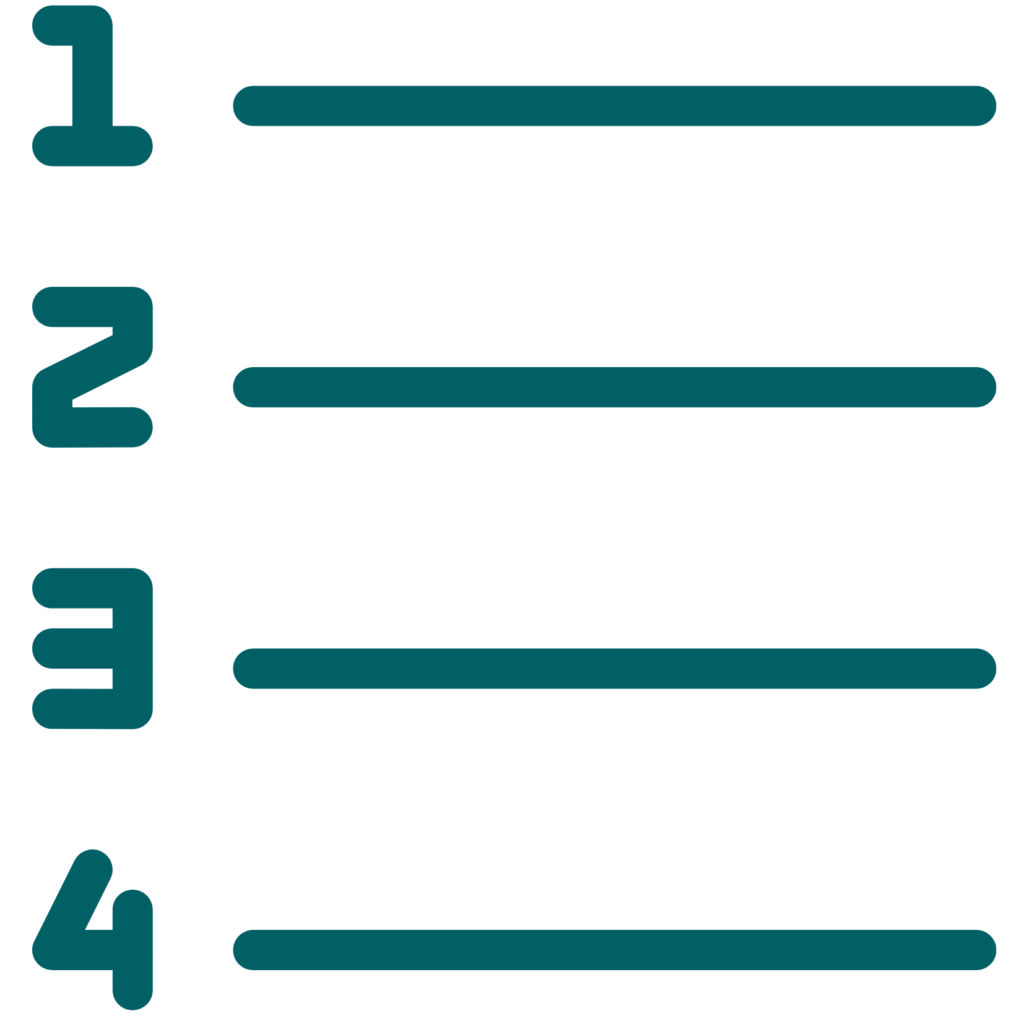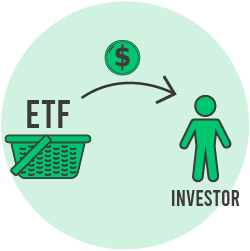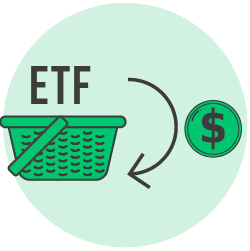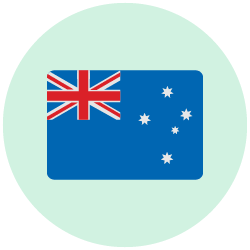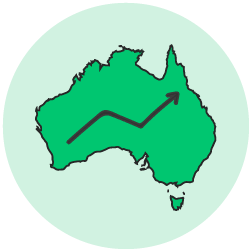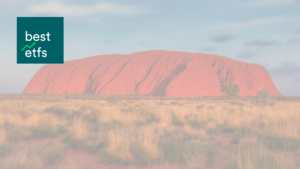Vaneck Australian Equal Weight ETF (ASX:MVW)
The VanEck MVW ETF provides exposure to over 60 of the largest and most liquid Australian shares, equally weighted. By equally weighting shares, this ETF aims to reduce concentration risk in specific Australian stocks and sectors.
MVW ETF review
MVW share price and fees
MVW fees
Analyst report
The VanEck Australian Equal Weight ETF (ASX: MVW) is a popular ETF, with $1.8 billion of net assets as of April 2023. MVW invests in and most liquid ASX-listed companies across all sectors. The ETF it’s quite a bit smaller than the biggest ASX-focused ETF, the Vanguard Australian Shares Index ETF (ASX: VAS).
MVW ETF: the balanced way to invest in ASX shares
The MVW ETF is not one of the cheapest ASX ETFs. It has a yearly management cost of 0.35%. So, with a $10,000 investment, the annual cost is $35 of management fees. That’s not bad (the ASX ETF average fee is ~0.49%), so there are plenty of ETFs that are more expensive.
💡 Remember, the fee for MVW doesn’t come out of your bank account. The ETF provider, in this case, VanEck, takes a small cut out of the fund’s value every day, automatically. See our video explainer for ETF fees and taxes.
There are some ASX ETFs that charge a fraction of the management fees that MVW ETF does. For example, the BetaShares Australia 200 ETF (ASX: A200) has an annual management fee of 0.04%. However, while the business names in the MVW ETF, VAS ETF and A200 ETF portfolios are similar, the money allocation sizing is different – that’s a key selling point of the VanEck Australian Equal Weight ETF.


Which index does the MVW ETF track?
The MVW ETF is built to track the MVIS Australia Equal Weight Index which, according to VanEck, is a pure-play rules-based Australian index that combines benchmark investing with blue-chip characteristics by tracking the performance of the largest and most liquid ASX-listed companies across all sectors, including offshore companies which generate at least 50% of their revenues or assets from the Australian market. Companies in the index are weighted equally.
In other words, it owns a large range of ASX shares. But, each position is meant to be the same size. Allocations are regularly re-weighted to ensure they stay equal.
In April 2023, it had 83 holdings, so there is plenty of diversification within the portfolio. All of the ‘eggs’ aren’t in one or two baskets.
Compared to the S&P/ASX 200 Index (ASX: XJO), the April 2023 weightings for the MVW ETF are more evenly spread, which included 19.6% to materials, 18.8% to financials, 12.1% to industrials and 10.3% to real estate. The ASX 200’s current weighting to financials in April 2023 was 27%, while materials had a 25.1% allocation, meaning over half of the ASX 200 is positioned in just two industries. The MVW ETF’s investment strategy reduces the risks associated with those two sectors.
Alternatives to the MVW ETF
There are a number of alternatives to the MVW ETF:
- Vanguard Australian Shares Index ETF (ASX: VAS) – the VAS ETF aims to track the ASX 300. It’s invested in 300 names, but it is arguably less diversified than the MVW ETF because the VAS ETF is strongly weighted to the largest ASX businesses like BHP, CBA, CSL, NAB and ANZ. As of April 2023, BHP accounts for almost 11% of the VAS ETF portfolio value. However, VAS does come with a much smaller management fee of 0.10%.
- iShares Core S&P/ASX 200 ETF (ASX: IOZ) – the IOZ ETF tracks the ASX 200, so it’s similar to the VAS ETF. But, it only owns 200 positions in the portfolio. So, we could say it’s less diversified than VAS and MVW because more is allocated to the larger ASX businesses in the IOZ ETF. However, IOZ comes with cheaper fees, with an annual cost of just 0.05%.
- BetaShares Australia 200 ETF (ASX: A200) – the A200 ETF tracks the Solactive Australia 200 Index, which tracks 200 of the largest companies on the ASX. A200 owns 200 holdings in its portfolio, but it is also heavily weighted to the financials and materials sectors because of the size of the businesses in those two sectors. So, it is also arguably less diversified than the MVW ETF because of the concentration on a few names. The A200 is the cheapest ASX-focused ETF, with an annual management of just 0.04%.
Can MVW be used as a “Core” ETF?
MVW owns many of the same ASX shares as some of the most popular ETFs like Vanguard Australian Shares Index ETF (ASX: VAS), but the equal-weighted part of the strategy makes it more diversified, in our view.
Past performance is not a reliable indicator of future results, but the higher weighting seems to have helped it deliver stronger returns than the ASX 200 over the long-term. As of March 2023, the MVIS Australia Equal Weight Index (which the MVW ETF tracks) has outperformed the ASX 200 over the prior year, three years and ten years.
While it doesn’t provide international diversification, we believe it can be considered a Core, long-term “bottom-drawer” ETF when combined with at least one global shares ETF such as the Vanguard MSCI Index International Shares ETF (ASX: VGS).
However, we think you should carefully consider if owning the MVW ETF makes sense if the VAS ETF or other popular Australian shares ETFs are already in your portfolio. Be mindful of the ‘overlap’ between your ETF holdings.
Australian shares have done fairly well over the longer-term, so the MVW ETF can be effectively combined with other ETFs focused on the global/US share market that provide exposure to different areas of the global market.
Investors may like the dividends and franking credits offered by the financials and resources businesses in the portfolio. But, the MVW ETF has a lower allocation to those sectors, so the underlying dividend yield may be a little lower than the VAS ETF. But, the MVW ETF may be able to deliver stronger capital growth because of the types of businesses it has a bigger allocation to.
Keep in mind that the MVW ETF has similar holdings to VAS and A200, so there could be unnecessary overlap if an investor holds more than one of these investments.
MVW largest positions (April 2023)
- Northern Star Resources Ltd (ASX: NST)
- Evolution Mining Ltd (ASX: EVN)
- AGL Energy Ltd (ASX: AGL)
- Newcrest Mining Ltd (ASX: NCM)
- REA Group Limited (ASX: REA)
- Stockland Corporation Ltd (ASX: SGP)
- Nextdc Ltd (ASX: NXT)
- Reece Ltd (ASX: REH)
- Washington H. Soul Pattinson and Co. Ltd (ASX: SOL)
- AMP Ltd (ASX: AMP)
However, remember that all of the positions are re-weighted to be equal every so often, so the largest positions today essentially just reflect which ASX shares have gone up in recent history.
MVW dividend yield
The ETF structure acts as a conduit to ‘pass on’ dividends and franking credits from the shareholdings (e.g. BHP, RIO, etc.) to the investor of the MVW ETF. The dividends from those businesses effectively decide the dividend yield of the MVW ETF itself.
The banks and resources businesses generally have high dividend yields, with franking credits on top of the cash dividends. But, the nature of the MVW ETF being equal-weight means it has a lower allocation to resources and banks. MVW has a lower dividend yield than some the most popular ASX ETFs such as the VAS ETF, because the MVW ETF has a higher weighting to lower-yielding companies. Over the prior five years to 31 March 2023, the cash (excluding franking) income return from MVW has been an average of 3.49% per year.
⚠️ Beware of the “historical yield” figures shown on the ETF provider or ASX websites ⚠️
Remember that in Australia ETFs are required to pay back ‘capital gains’ as well as dividend income from companies. So, when an ETF’s distribution is paid to ETF investors you will receive an ‘income’ amount (from the dividends generated by companies inside the MVW ETF) and capital gains (from buying and selling by the ETF). Therefore, the ‘historical yield’ figure amount is not a true reflection of the sustainable income potential of an ETF because you are, in effect, getting some of your investment back.
Lesson: the sustainable amount of income an ETF will generate over many years should exclude capital gains amount paid back to investors as they are not always tax effective.
Practical tip: study the types of distributions paid by an ETF, consider the types of companies it is invested into, and do not rely solely on the ‘historical yield’ figures on our website, the ETF provider’s website or the ASX website.
Risks
We believe the risk level of the MVW ETF is at relatively a low end of the range when compared against the other diversified and broad-based Australian shares ETFs, such as VAS or A200 because it’s less exposed to a few large businesses from just two sectors – banking and mining.
Compared to bonds, the MVW ETF is likely to be more volatile, which is seen as riskier, over the long run. Therefore, we believe it should be considered a higher risk and long-term (7+ years) investment.
Compared to sector-specific ETFs or thematic ETFs (e.g. ACDC, CLNE. HACK, etc.) MVW should be slightly less risky over a full market cycle given it’s diversified across sectors and company types.
However, keep in mind that the MVW ETF is not invested in the international share market. We believe that ETF investors can benefit from diversification by getting exposure to Australian shares and global shares. There are plenty of international ETFs to choose from (e.g. VGS, ETHI and NDQ).
Does MVW pay franking credits?
Yes. MVW will pay or ‘pass through’ the franking credits it receives from its holdings. If you’re especially focused on fully franked dividend income you might try something like the VHY ETF (from Vanguard) as either a complement or replacement to MVW.
To view the full range of ETFs available on the ASX, click here. Or to join us inside Rask Core 🌏 and get all of our premium ASX research and model portfolios, click here.
Fee comparison
What does the MVW ASX ETF invest in?
MVW invests in Australian shares, which offer growth and income potential. You could buy all of these companies yourself using a share brokerage account, but that would be a very expensive and time-consuming process. ETFs are an effective way to invest in an entire sector through a single trade.
What do investors use the MVW ETF for?
The VanEck MVW ETF could be used by investors to gain exposure to a broad basket of Australia’s largest public companies, which are likely to grow their profit over time and pay regular, tax-effective dividends to their shareholders. The fund can also include companies which are not from the ASX but generate at least 50% of their revenue in Australia. Please note: MVW’s “equal weight” index will have a different performance and risk profile compared to a traditional sharemarket index, such as the ASX 200, which uses a company’s market capitalisation.
How to buy the MVW ETF
A portfolio FULL of our best ETF ideas
Click the button to discover how you can create one account and get an automated professionally managed ETF portfolio.
MVW investor starter pack
MVW literature
MVW holdings
ASX: MVW’s dividend 2021
When does MVW pay a dividend?
MVW dividend reinvestment plan (DRP)
Warnings we apply to the MVW ETF
MVW tax domicile
MVW ETF registry
Fund issuer
Australian shares sector data
How MVW compares:
Latest ETF News
*The warnings on this page are applied by our ETF research team. Please know that these warnings are based on quantitative metrics and our internal methodology. These risks are not exhaustive and therefore they should not be relied upon. Always read the PDS of the function and speak to your financial adviser before acting on this information.
The Best ETF in Australia?
We’ve found the ONE ETF that could rule them all…
Right now, there are 200+ ETFs on the ASX. Then there are index funds. Hundreds of managed funds. LICs. REITs. And everything in between. Wouldn’t it be nice to make ONE investment and build the strong Core of your portfolio — with just one click?
Rask’s lead ETF research analyst and investing team have identified our #1 ETF for 2021 and beyond. Our analyst team has put together a full research report and a step-by-step investment guide to buying this ETF.
Best of all: The report is totally free and will be sent via email.

Unsubscribe anytime. Read our Terms, Financial Services Guide, Privacy Policy. We’ll never sell your email address. Our company is Australian-owned.


